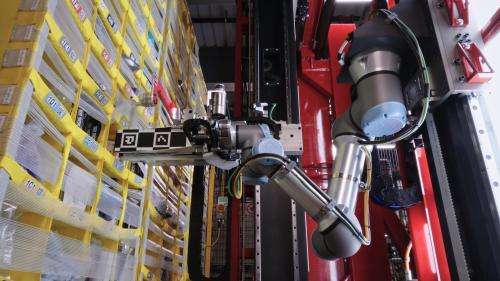Automation and artificial intelligence are bringing change to the ways people live and work. In this week’s edition of Charts of the Week, a focus on recent research on automation and the future of work.
Nearly half of jobs NEEDING LESS THAN A bachelor’s degrees face automation
Mark Muro, Robert Maxim, and Jacob Whiton of the Metropolitan Policy Program are co-authors of a new report on the potential of automation and artificial intelligence to displace occupational tasks, with analysis conducted nationally as well as within states and metropolitan areas. They assess susceptibility of jobs to automation by gender, race, and education status. Visit the report online to see more data, and what your metro area’s automation potential is.

Autonomous vehicle/digital mobility sector employs 9.5 million Americans, and growing
Jobs in digital mobility, including but not limited to building and maintaining autonomous vehicles, currently employ at least 9.5 million workers, according to Brookings researchers. Joseph Kane and Adie Tomer of the Metropolitan Policy Program account for these nearly 10 million workers in 329 occupations in 2017. “Collectively,” they observe, “that means there are more workers in digital mobility than those employed in other sizable sectors like finance, real estate, or administrative services.”

WHICH OCCUPATIONS ARE AT HIGHEST RISK FOR AUTOMATION?
Harry Holzer, nonresident senior fellow in Economic Studies at Brookings, examines OECD (Organization for Economic Co-operation and Development) data on work displacement rates in the U.S. and other OECD countries in coming decades. He notes that “automation will continue to have a ‘skill bias’ … less educated workers will remain at higher risk of direct displacement than most with postsecondary education, and will likely face lower demand in the labor market – resulting in lower wages and employment for them.” Holzer proposes 5 federal and state policies to help middle class workers at risk of displacement.
The Brookings Institution is committed to quality, independence, and impact.
We are supported by a diverse array of funders. In line with our values and policies, each Brookings publication represents the sole views of its author(s).





Commentary
Charts of the Week: Automation and jobs
February 8, 2019